Executive Summary
The Perrin Performance gurney flap decreased rear-end lift an evident amount.
Overall drag on the WRX increased a minimal amount.
Overall aerodynamic efficiency improved with the use of the Perrin Performance gurney flap.
Meshing
The meshing of these cases was done in ANSYS Meshing. The
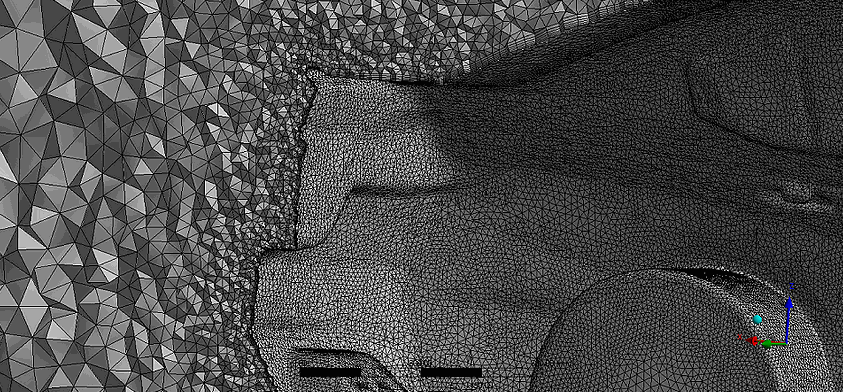
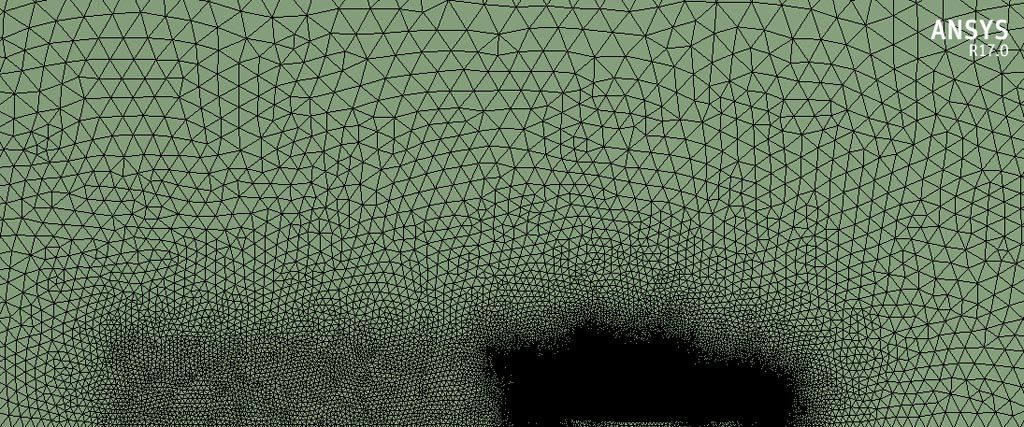
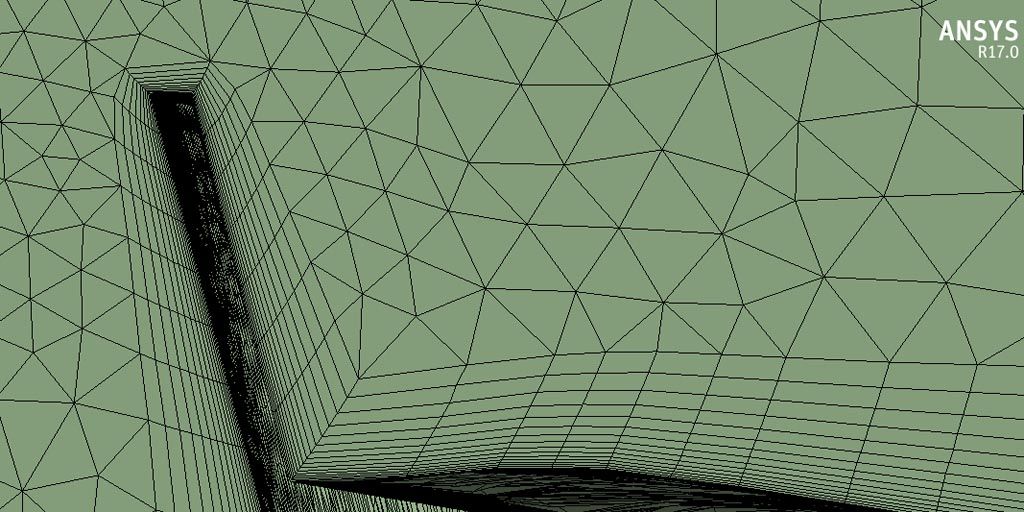
Boundary Conditions
Boundary conditions are used to define the computational problem. Without boundaries, nothing can be solved. Proper boundary conditions are a must for an accurate analysis. A full understanding of the physics of the problem is needed. CFD only emulates the condition of the road and track, it does not reproduce it. Simulations inherently deviate from reality and it is often hard to quantify all the sources of error. These two cases were solved using symmetry on the XZ Plane. This was to decrease the mesh quantity and speed up simulation time. Using symmetry is standard in the industry unless you are modeling yaw. The case is modeled using a virtual wind tunnel which is discretized and used as the fluid volume. The air then flows over the stationary car in the boundary. Rotational wheels can be simulated but were not in these cases. The reason for this is because we were specifically looking at the flow region around the Perrin Performance Gurney. The ground and wind tunnel walls have the shear equal 0 to not have boundary layer growth. This simulates a rolling road condition to have a proper flow regime. Inlet velocity is 45 m/s.
Numerical Results
The Perrin Performance Gurney Flap decreased lift of the WRX while slightly increasing drag. By doing this, the gurney increased the overall aerodynamic efficiency. The decrease in lift happened towards the rear of the car thus shifting the aerodynamic balance rearward.
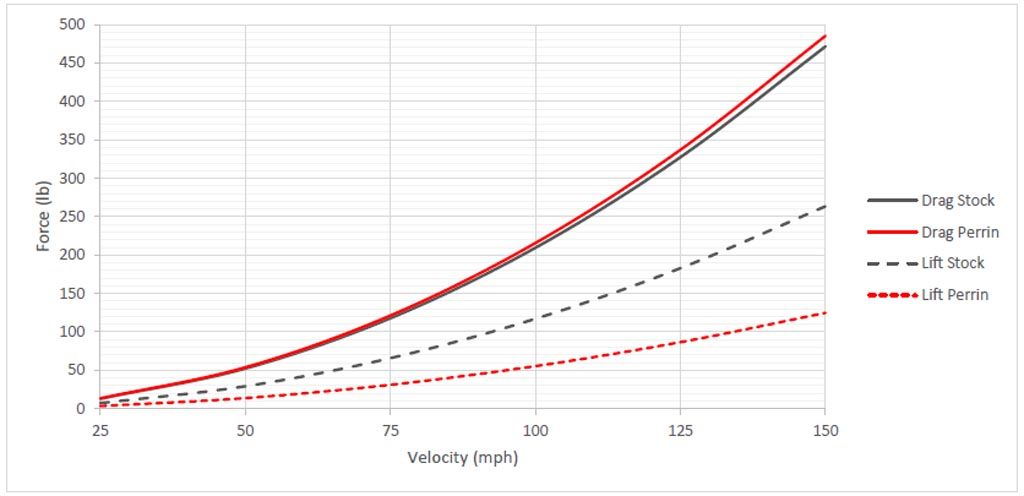
CFD Images
We took multiple images of the WRX to showcase the difference in the flow field around the rear of the WRX with the Gurney installed.

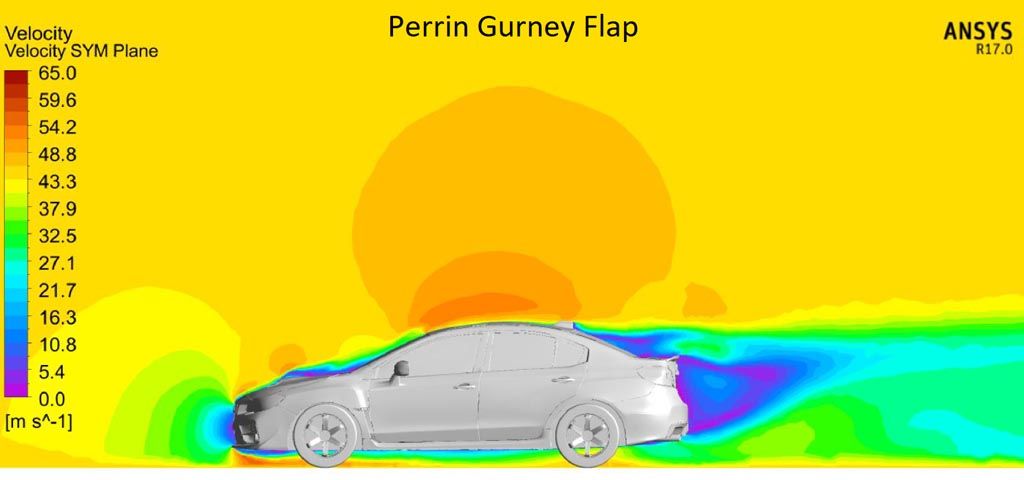
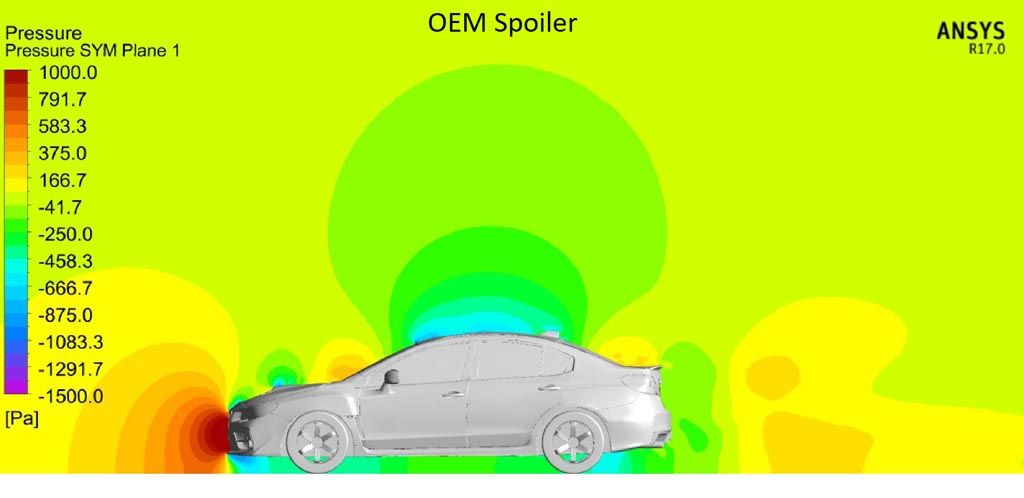
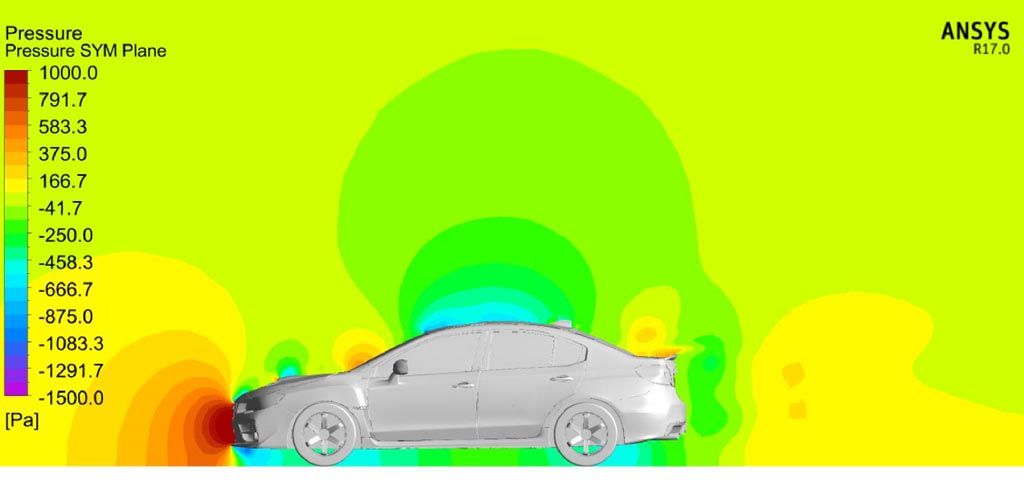
Conclusion
The Perrin Performance Gurney Flap improves the aerodynamic performance of the 2015-2016 WRX/STI. The gurney flap decreases the overall lift of the car while slightly increasing drag. This means the aerodynamic efficiency of the system is increased. Note, something as simple as a gurney flap can change the flow structure around the whole car as seen by the post-processing figures. It will not just have an impact on the flow beyond the component. It will impact the flow in front also. The impact of a gurney like this is evident from past studies. The results from the CFD on the Perrin Gurney has similar trends as past gurney studies in the wind tunnel. Overall, this is a great component to install if you want to improve the aerodynamic performance of your WRX/STI.
WRX/STI Gurney Flap by Perrin Performance